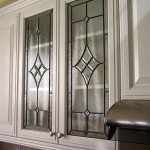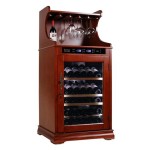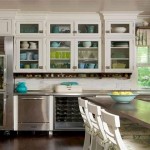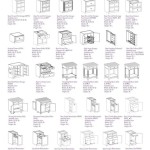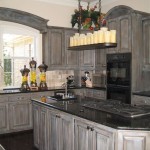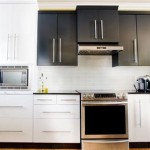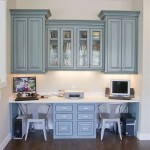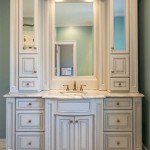Can You Paint Over Wood Cabinets Without Sanding?
Painting wood cabinets can be a daunting task, especially if you're considering skipping the sanding step. While sanding is typically recommended for a smooth and professional-looking finish, there are situations where it may not be necessary, such as when painting over cabinets that are already in good condition.
### When to Avoid SandingThere are several instances when skipping the sanding step can be acceptable:
-Cabinets in good condition:
If your cabinets are free of major scratches, dents, or uneven surfaces, sanding may not be necessary. The existing finish will provide a sufficient base for the new paint. -Painting with chalk paint:
Chalk paint adheres well to most surfaces, including wood, and does not require sanding prior to application. -Using a bonding primer:
Bonding primers are designed to adhere to difficult surfaces without sanding. They create a strong base for the paint, eliminating the need for extensive surface preparation. -Quick touch-ups:
For minor paint touch-ups or color changes, sanding may not be necessary if the existing finish is smooth and well-adhered. ### Surface Preparation Without SandingIf you decide to skip sanding, it's essential to prepare the surface properly:
-Clean the cabinets:
Remove all dirt, grease, and dust using a degreasing cleaner. Allow the cabinets to dry completely. -Repair any imperfections:
Fill in any holes, cracks, or dents with wood filler. Sand the filled areas smooth after the filler has dried. -Apply a bonding primer:
Apply a bonding primer to the cabinets, following the manufacturer's instructions. Allow the primer to dry completely before painting. ### Painting the CabinetsOnce the surface is prepared, you can proceed with painting:
-Use a high-quality paint:
Choose a paint specifically designed for wood cabinets. -Apply thin, even coats:
Apply thin coats of paint to avoid brush strokes or runs. -Allow ample drying time:
Allow each coat of paint to dry completely before applying the next. -Consider using a topcoat:
A topcoat or polyurethane can protect the painted surface from scratches and wear. ### ConsiderationsWhile skipping sanding can save time and effort, it's important to consider the following:
-Adhesion issues:
Without sanding, the paint may not adhere as well to the surface, potentially leading to premature peeling or chipping. -Uneven finish:
If the existing finish is uneven, paint may accentuate the imperfections without sanding. -Long-term performance:
A sanded surface provides a better base for paint adhesion, which can improve the overall longevity of the painted finish. ### ConclusionPainting wood cabinets without sanding can be a viable option in certain situations. However, it's crucial to assess the condition of the cabinets, prepare the surface properly, and use high-quality materials to ensure a successful outcome. If you're unsure about whether to sand or not, it's always best to err on the side of caution and opt for sanding.

How To Paint Laminate Cabinets Without Sanding The Palette Muse

How To Paint Kitchen Cabinets Without Sanding Or Priming

Painting Over Oak Cabinets Without Sanding Or Priming Hometalk

How To Paint Kitchen Cabinets Without Sanding Sustain My Craft Habit

Prep And Paint Cabinets Without Sanding

Can You Paint Cabinets Without Sanding Trusted Coatings

How To Paint Fake Wood Kitchen Cabinets Simple Made Pretty 2024

How To Paint Your Cabinets In A Weekend Without Sanding Them Chris Loves Julia

How To Paint Oak Cabinets Without Sanding 100 Room Challenge Week 2 A Heart Filled Home Diy Decor

How To Paint Wood Furniture Without Sanding In 2024 Grace My Space
Related Posts

